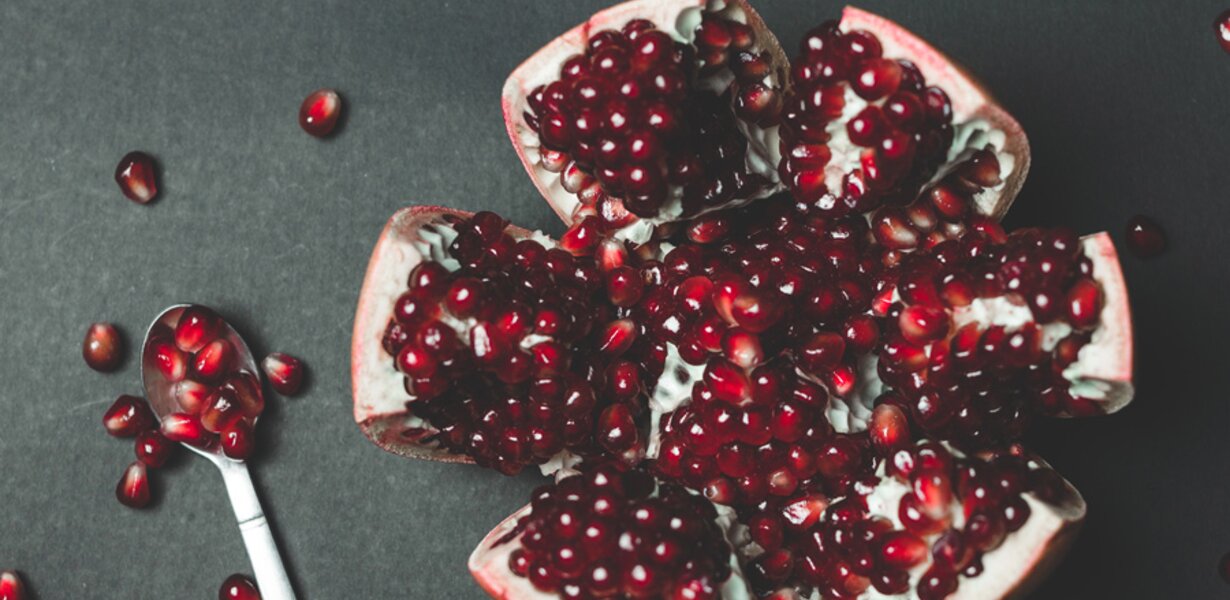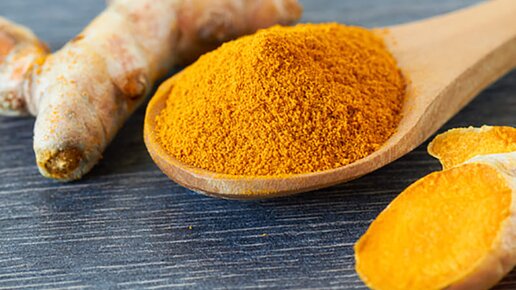What do grape pips, green tea and pomegranate have in common? They are all brimming with special substances that naturally occur in plants and are abbreviated as OPCs. Today we would like to reveal to you the characteristics of these valuable plant substances and why nutritional research has jumped onto the OPC bandwagon.
What are oligomeric proanthocyanidines (OPCs)?
Oligomeric proanthocyanidines (OPCs) are a group of plant compounds belonging to the class of polyphenols. These substances are found naturally in different plants, especially in fruits, bark, seeds and leaves. OPCs (oligomeric proanthocyanidines) as so-called secondary plant substances are not vital for the plant, but there is no doubt that they are useful. When it comes to nutritional supplements, OPCs are best known for their powerful antioxidant properties as they have potential health benefits.
What properties do OPCs have?
In nature, OPCs are particularly abundant in those plant parts that border the outside world and interact with it. Larger quantities of secondary substances can also be found in kernals and kernal housings. If one considers the tasks of OPCs within the plant, they are well positioned in the outer layers and reproductive parts to form a kind of plant defence system that protects the plant from UV radiation, climate influences, predators and pest infestation.
Why are OPCs so interesting for research?
“What protects the plant could also benefit us humans.” Guided by this motto, nutritional research has been working closely on the world of secondary plant substances since the early 1990s. Since then, the state of knowledge about the diversity of the approximately 10,000 substances has expanded significantly and it is now more or less agreed that the plant-based protective, taste, fragrance and colour agents can also have benefits for the human organism.
Resveratrol – very much to your benefit!
Resveratrol, an ingredient in red wine, is one of the most well-known secondary plant substances. As a natural protective substance, resveratrol in plants counteracts infestation by parasites and fungi. Also, under stress, such as UV light, the plant produces more resveratrol.
OPC: The benefits of grape seed extract
OPCs are often valued for their powerful antioxidant properties, which help neutralise free radicals in the body, preventing cell damage. Many health benefits are based on these properties:
- Anti-inflammatory effect: Due to their ability to inhibit inflammatory enzymes, OPCs can help reduce inflammatory reactions in the body.
- Supporting the immune system: OPCs can support the immune system with their antioxidant effect and thus strengthen the defences.
- Acceleration of wound healing: OPCs provide faster wound healing through their anti-inflammatory effect and positive effect on blood vessels and collagen synthesis.
- Promotion of skin health and slower skin ageing : The antioxidant properties of OPCs can also support skin health by protecting the skin from environmental damage such as UV rays and promoting collagen production. This contributes to improved skin elasticity and tone and slows down skin ageing.
- Support of the cardiovascular system: OPCs promote the elasticity and flexibility of the blood vessels by supporting collagen and elastin production. This contributes to lower blood pressure and supports overall vascular health.
- Reduction of oxidative stress in the brain: The brain is particularly susceptible to free radical damage as it is high in oxygen and high in unsaturated fatty acids that can easily oxidise. OPCs help neutralise free radicals in the brain, which contributes to the protection of neurons and the maintenance of the brain function.
What foods contain these OPCs?
OPCs are often associated with grape seeds. At the end of the day, these little pips are real OPC bombs. But OPC is also found in other plant-based foods. The OPC content of a food is subject to natural fluctuations, which are determined by growth conditions.
OPC occurrence at a glance:
- Grape pips: Grape seed extract is one of the richest sources of OPCs.
- Bark of pine: The so-called pine bark extract (pycnogenol) is particularly well known.
- Berries: Especially blueberries, bilberries, cranberries and raspberries.
- Red grapes: Here too, they are responsible for some of the health benefits of red wine.
- Peanuts: Peanuts also contain significant amounts of OPCs, especially in the skin of the nuts.
- Apples: OPCs are also found in apples, especially in the skin.
- Pomegranate: Pomegranate seeds and juice are known for their antioxidant properties, with some of this effect being due to their OPC content.
- Green tea: In addition to its known catechins (such as EGCG), it also contains OPCs.
OPC food supplements: What should I pay attention to?
If you want to fill up with an extra helping of valuable OPCs, you can provide targeted help with first-class nutritional supplements. High-quality OPC preparations are characterised by excellent product quality: They use extracts containing OPCs that have undergone strict, comprehensive quality tests and do not use unnecessary additives. The level of quality is particularly high due to strict controls by an independent third party.
Since the natural OPC content of food is subject to certain fluctuations, quality products contain standardized amounts of OPCs. This ensures that you get the amount you are expecting to take. Sophisticated combinations with other plant extracts ensure an optimum interaction of the ingredients.
How to take OPC supplements with grape seed extract correctly
OPC supplements should best be taken on an empty stomach (approx. 30 - 45 min before or at least 30 min after a meal) with plenty of water in order to best utilise the OPC they contain. People with sensitive stomachs can take the preparation with a meal in order to ensure better tolerability.
When should you take OPC?
You can take OPC at any time of day and so you can choose the time that best suits you. Ideally, however, they should be taken on an empty stomach or at least 30 minutes after you last had a meal.
What is the recommended dose of OPC?
The recommended daily dose of OPCs is 1-2 mg per kilogram of body weight. By combining various plant extracts, additional secondary plant substances are added, which supplement and round off the OPCs.
Tip: Are you already familiar with our two OPC preparations?
With OPC Resveratrol Formula and OPC PolyMax® 250/30, we can provide you with concentrated plant power.
Sources:
Afzal M, Safer AM, Menon M. (2015). Green tea polyphenols and their potential role in health and disease, Inflammopharmacology, Bd. 23, Nr. 4:151–161. https://link.springer.com/article/10.1007/s10787-015-0236-1
Akhtar S, Ismail T, Fraternale D, Sestili P. (2015). Pomegranate peel and peel extracts: Chemistry and food features, Food Chemistry, Bd. 174:417–425.https://pubmed.ncbi.nlm.nih.gov/25529700/
Anonye BO. (2017). Commentary: Dietary Polyphenols Promote Growth of the Gut Bacterium Akkermansia muciniphila and Attenuate High-Fat DietInduced Metabolic Syndrome, Front Immunol, Bd. 8. https://www.frontiersin.org/journals/immunology/articles/10.3389/fimmu.2017.00850/full
Asha Devi S, Sagar Chandrasekar BK, Manjula KR, Ishii N. (2011). Grape seed proanthocyanidin lowers brain oxidative stress in adult and middle-aged rats, Experimental Gerontology, Bd. 46, Nr. 11:958–9. https://pubmed.ncbi.nlm.nih.gov/21871550/
Bagchi D et al. (2003). Molecular mechanisms of cardioprotection by a novel grape seed proanthocyanidin extract, Mutation Research/Fundamental and Molecular Mechanisms of Mutagenesis, Bd. 523–524:87–97. https://pubmed.ncbi.nlm.nih.gov/12628506/
Bagchi D, et al. (2002). Cellular protection with proanthocyanidins derived from grape seeds, Ann. N. Y. Acad. Sci, Bd. 957:260–270. https://pubmed.ncbi.nlm.nih.gov/12074978/
Bagchi D, et al. (2003). Molecular mechanisms of cardioprotection by a novel grape seed proanthocyanidin extract, Mutat Res. 523-524:87-97. https://pubmed.ncbi.nlm.nih.gov/12628506/
Barbaro B et al. (2014). Effects of the Olive-Derived Polyphenol Oleuropein on Human Health, Int J Mol Sci, Bd. 15, Nr. 10:18508–18524. https://www.mdpi.com/1422-0067/15/10/18508
De Palma G, Collins SM, Bercik P, (2014). The microbiota-gut-brain axis in functional gastrointestinal disorders, Gut Microbes, Bd. 5, Nr. 3:419–429. https://pubmed.ncbi.nlm.nih.gov/24921926/
Dueñas M et al. (2015). Studies on Modulation of Gut Microbiota by Wine Poly phenols: From Isolated Cultures to Omic Approaches, Antioxidants (Basel), Bd. 4, Nr. 1:1–21. https://www.mdpi.com/2076-3921/4/1/1
Engelbrecht AM, et al. (2007). Proanthocyanidin from grape seeds inactivates the PI3-kinase/PKB pathway and induces apoptosis in a colon cancer cell line. Cancer Lett. 258(1):144-53. https://pubmed.ncbi.nlm.nih.gov/17923279/
Gresele P, Cerletti C, Guglielmini G, Pignatelli P, de Gaetano G, Violi F. (2011). Effects of resveratrol and other wine polyphenols on vascular function: an update, The Journal of Nutritional Biochemistry, Bd. 22, Nr. 3:201–21. https://pubmed.ncbi.nlm.nih.gov/21111592/
Gupta M, et al. (2020). Grape seed extract: having a potential health benefits. J Food Sci Technol. 57(4):1205-1215. https://link.springer.com/article/10.1007/s13197-019-04113-w
Heggers, J. P., et al. (2002). The effectiveness of processed grapefruit-seed extract as an antibacterial agent: II. Mechanism of action and in vitro toxicity. The Journal of Alternative & Complementary Medicine, 8(3), 333-340. https://pubmed.ncbi.nlm.nih.gov/12165191/
Jia Z, Song Z, Zhao Y, Wang X, Liu P. (2011). Grape seed proanthocyanidin extract protects human lens epithelial cells from oxidative stress via reducing NF-кB and MAPK protein expression. 17:210-7. https://pmc.ncbi.nlm.nih.gov/articles/PMC3025097/
Ma, S., Chen, et al. (2017). Mitigation effect of proanthocyanidin on secondary heart injury in rats caused by mechanical trauma. Scientific Reports, 7(1), 44623. https://www.nature.com/articles/srep44623
Mani Satyam S, et al. (2014). Grape seed extract and zinc containing nutritional food supplement prevents onset and progression of age-related cataract in wistar rats. J Nutr Health Aging. 18(5):524-30. https://pubmed.ncbi.nlm.nih.gov/24886740/
Marzorati M et al. (2015). Addition of acacia gum to a FOS/inulin blend improves its fermentation profile in the Simulator of the Human Intestinal Microbial Ecosystem (SHIME®), JOURNAL OF FUNCTIONAL FOODS, Bd. 16: 211–222. https://www.researchgate.net/publication/277028024_Addition_of_acacia_gum_to_a_FOSinulin_blend_improves_its_fermentation_profile_in_the_Simulator_of_the_Human_Intestinal_Microbial_Ecosystem_SHIMER
Medjakovic S, Jungbauer A. (2013). Pomegranate: a fruit that ameliorates metabolic syndrome, Food Funct. Bd. 4, Nr. 1:1 19–39. https://pubs.rsc.org/en/content/articlelanding/2013/fo/c2fo30034f
Petrassi C, Mastromarino A, Spartera C (2000). PYCNOGENOL® in chronic venous insufficiency, Phytomedicine, Bd. 7, Nr. 5:383–388. https://pubmed.ncbi.nlm.nih.gov/11081989/
Queipo-Ortuño MI et al. (2012). Influence of red wine polyphenols and ethanol on the gut microbiota ecology and biochemical biomarkers, The American Journal of Clinical Nutrition, Bd. 95, Nr. 6:1323–1334. https://pubmed.ncbi.nlm.nih.gov/32151962/
Roopchand DE et al. Dietary Polyphenols Promote Growth of the Gut Bacterium Akkermansia muciniphila and Attenuate High-Fat Diet-Induced Metabolic Syndrome, Diabetes, Bd. 64, Nr. 8:2847–2858. https://pubmed.ncbi.nlm.nih.gov/25845659/
Sano A, Tokutake S, Seo A. (2013). Proanthocyanidin-rich grape seed extract reduces leg swelling in healthy women during prolonged sitting. J Sci Food Agric. 93(3):457-62. https://pubmed.ncbi.nlm.nih.gov/22752876/
Schön, C., et al. (2021). Grape seed extract positively modulates blood pressure and perceived stress: A randomized, double-blind, placebo-controlled study in healthy volunteers. Nutrients, 13(2), 654. https://www.mdpi.com/2072-6643/13/2/654
Shaham-Niv S et al. (2018). Differential inhibition of metabolite amyloid formati on by generic fibrillation-modifying polyphenols, Communications Chemistry, Bd. 1, Nr. 1:25. https://www.nature.com/articles/s42004-018-0025-z
Shi J, et al. (2003). Polyphenolics in grape seeds-biochemistry and functionality. J Med Food. 6(4):291-9. https://pubmed.ncbi.nlm.nih.gov/14977436/
Wang C, et al. (2017). Grape Seed Procyanidin Extract Reduces Arsenic-Induced Renal Inflammatory Injury in Male Mice. Biomed Environ Sci. 30(7):535-539. https://pubmed.ncbi.nlm.nih.gov/28756814/
Xifra G, Esteve E, W Ricart, Fernández-Real JM, (2016). Chapter 12 – Influence of Dietary Factors on Gut Microbiota: The Role on Insulin Resistance and Diabetes Mellitus, in Molecular Nutrition and Diabetes, D. Mauricio, Hrsg. San Diego: Academic Press, 147–154. https://www.researchgate.net/publication/303415995_Influence_of_Dietary_Factors_on_Gut_Microbiota
Yarovaya L, et al. (2021). Effect of grape seed extract on skin fibroblasts exposed to UVA light and its photostability in sunscreen formulation. J Cosmet Dermatol. 20(4):1271-1282. https://pubmed.ncbi.nlm.nih.gov/32892461/
Zhang, H., et al. (2016). The impact of grape seed extract treatment on blood pressure changes: A meta-analysis of 16 randomized controlled trials. Medicine, 95(33), e4247. https://pubmed.ncbi.nlm.nih.gov/27537554/









